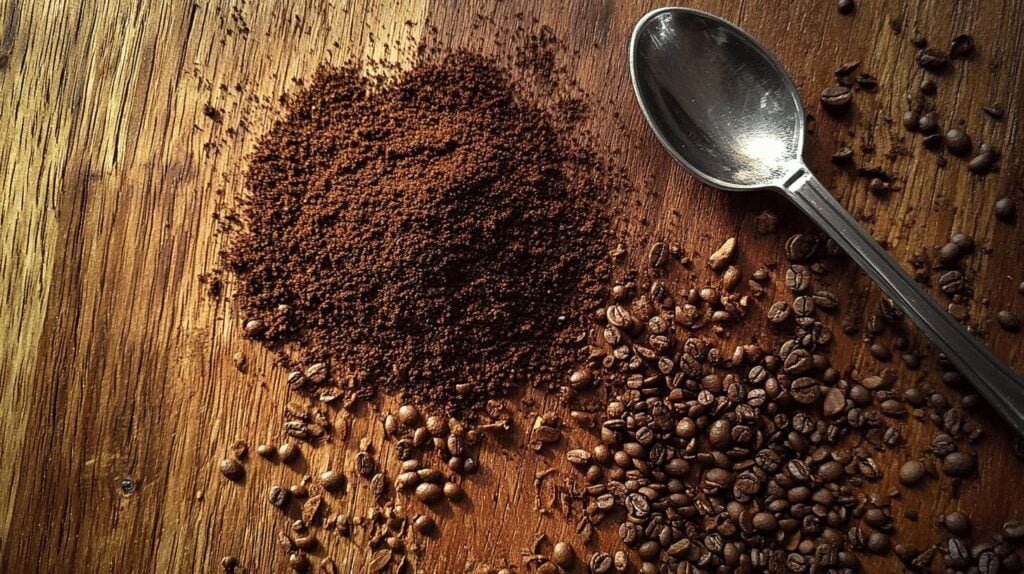
6 Ways Specialty Coffee Brands Build Loyalty and Stand Out
Discover how top specialty coffee brands create lasting loyalty through storytelling, sourcing, and community connection. Real tips from 6 industry experts.

Coffee blends are fascinating for anyone with a passion for this beloved drink. With coffee blends, you will find a delightful interplay of flavors that cater to every taste. Blends are combinations of beans from different regions, offering a balanced and consistent taste you can enjoy every day. Here’s a quick breakdown:
Coffee is more than just a morning ritual. It’s an experience that reflects the art and science of blending beans from different origins to create unique and consistent flavor profiles.
Imagine starting your day with a heavenly cup that greets you with a chocolaty aroma or a fruity punch. That’s the beauty of coffee blends. They offer a balanced, reliable flavor that a single origin can’t always match. Plus, they cater to different preferences, whether you enjoy a complex espresso blend or a smooth breakfast combo.
Single-origin coffee shines, too, showcasing a location’s unique traits. You taste the terroir—how climate and soil shape the bean’s flavor. Ethiopian Yirgacheffe, for instance, is known for its floral and fruity notes. Yet, when you crave consistency, coffee blends have a special role. They balance beans’ unique traits to keep the taste steady, even as seasons change. With Equipoise Coffee, you explore products like the Cavaliers Blend or Mexican Oaxaca, enhancing your coffee journey.
Types of coffee blends terms explained:
Coffee blends are a unique mix of beans from different places, each contributing its own flavor to create a balanced cup. Two main types of beans used in blends are Arabica and Robusta.
Arabica beans are known for their smooth, sweet flavor with hints of fruit and sugar. They are often grown in high-altitude regions, which improves their complexity. Robusta beans, on the other hand, are stronger and more bitter. They have higher caffeine content and are often used to add body and a robust flavor to blends.
Blending these two types can create a perfect balance. Imagine a blend where the smoothness of Arabica meets the boldness of Robusta. This combination results in a cup that’s both flavorful and invigorating.
The art of blending doesn’t stop at just mixing Arabica and Robusta. Coffee blends can also involve beans from different micro-level divisions. This means beans are selected from various regions within a country or even from different altitudes on the same farm. These subtle differences can significantly impact the flavor profile.
For example, a blend might include beans from Ethiopian Yirgacheffe for floral notes and Colombian Supremo for a rich body. This careful selection process ensures a complex and satisfying flavor.
Creating a coffee blend is like conducting a symphony. Each bean plays a part to achieve harmony. The goal is to highlight the best attributes of each coffee, resulting in a blend that is more than the sum of its parts.
Blends offer a reliable taste that remains consistent, even when the supply of single-origin beans might vary. This consistency is why many coffee lovers prefer blends for their daily brew.
Exploring coffee blends reveals a rich variety of flavors and aromas. From the popular Arabica Robusta blend to unique seasonal and espresso blends, there’s something for every coffee lover.
One of the most common types of coffee blends is the Arabica Robusta blend. This blend combines the smooth, sweet notes of Arabica beans with the strong, bitter profile of Robusta. The result is a balanced cup that offers both flavor and a caffeine kick. Arabica Robusta blends are ideal for those who enjoy a robust coffee experience without sacrificing flavor complexity.
Seasonal blends are crafted to capture the essence of specific times of the year. These blends often use beans harvested during a particular season, highlighting unique flavors that are only available for a limited time. For instance, a winter blend might feature rich, chocolatey notes, while a summer blend could offer bright, fruity flavors. Seasonal blends are perfect for those who love to explore and appreciate the changing flavors of coffee throughout the year.
Espresso blends are carefully crafted to produce the perfect shot of espresso. These blends typically use a combination of Arabica and Robusta beans to achieve a full-bodied, flavorful espresso with a rich crema. The precise balance of beans in espresso blends ensures a smooth, consistent taste that highlights the best attributes of each coffee. Whether you prefer a classic espresso or a complex, layered flavor, espresso blends cater to a wide range of preferences.
Espresso blends are often medium to dark-roasted to improve their bold flavors. The roasting process helps bring out the best in the beans, creating a rich, aromatic espresso that coffee enthusiasts will love.
Creating coffee blends is a fascinating journey that involves art, science, and a lot of tasting. Here’s how it all comes together:
Cupping is where it all begins. This is the method used to taste and evaluate different coffees. During a cupping session, coffee is brewed in small bowls with hot water. Tasters use a spoon to slurp the coffee, which helps spread the flavors across the palate. This process helps identify the unique characteristics of each coffee, like aroma, acidity, body, and flavor. It’s a critical step in deciding which coffees will work well together in a blend.

In pre-blending, all the green coffee beans are mixed together before roasting. This method is quicker and often used by large commercial roasters. However, there’s a catch: different beans roast differently. Beans with varying moisture and density levels might not roast evenly, leading to some being over-developed or under-developed. While pre-blending can be efficient, it may not always produce the best flavor profile.
Post-blending takes a different approach. Here, each type of coffee bean is roasted separately to its optimal level, or “sweet spot.” After roasting, the beans are mixed. This method respects the unique identity of each coffee origin, allowing the best flavors to shine. At Equipoise Coffee, post-blending is the preferred method because it offers greater control over the final product, resulting in cleaner and sweeter flavor profiles.
The ultimate goal of blending is to create a distinctive and balanced flavor profile. This involves carefully selecting the right beans and determining the perfect proportions. The team at Equipoise Coffee uses their expertise to ensure each blend is unique and delicious. For example, blending Brazilian beans known for their nutty and chocolaty flavors with Colombian beans that have bright citrus notes can create a complex and satisfying cup.
The process of creating coffee blends is both a science and an art. It requires skill, experience, and a keen palate to balance the diverse flavors and characteristics of different coffee origins. The result is a blend that offers a consistent and enjoyable coffee experience for everyone.
When it comes to types of coffee blends, understanding the flavor profile is key. Each blend is a symphony of aroma, acidity, body, and flavor, crafted to deliver a unique taste experience.
Aroma is often the first sensation that hits you when you brew a cup of coffee. It’s the bouquet of scents that rise from the cup, hinting at the flavors to come. For example, the Aromatico blend is aptly named for its bold and nuanced scents, offering aromas of dried fruits and nuts with hints of rich cocoa. This enticing aroma can set the stage for a delightful coffee experience.
Acidity in coffee doesn’t refer to sourness but rather a bright, crisp quality that adds liveliness to the cup. It’s what gives coffee its refreshing zing. A blend like the Ethiopian Yirgacheffe is celebrated for its bright acidity, which can offer floral and citrusy notes. This characteristic is particularly appreciated in lighter roasts, where the natural flavors of the beans are more pronounced.
Body describes the weight or thickness of the coffee on your palate. It can range from light and tea-like to full and creamy. The Cavaliers Blend, for instance, might present a medium body, providing a satisfying mouthfeel without being too heavy. A coffee’s body can improve the overall drinking experience, making it feel more substantial and fulfilling.
Flavor is the culmination of all the elements working together. It’s the taste that lingers after each sip. Coffee blends can offer a wide range of flavors, from fruity and floral to chocolaty and nutty. The Mexican La Laja Honey blend might highlight sweet and fruity notes, thanks to its honey processing method. This creates a complex and memorable flavor profile that keeps coffee lovers coming back for more.
In crafting these blends, Equipoise Coffee aims to balance these elements to create a harmonious and consistent flavor profile. Whether you prefer a bright, acidic cup or a full-bodied, chocolaty brew, there’s a blend designed to satisfy your taste buds. The art of blending lies in finding that perfect balance, ensuring each cup is a delightful experience.
Coffee is generally categorized into four main types of beans: Arabica, Robusta, Excelsa, and Liberica.
A coffee blend is a mix of different coffee beans, often from various regions or countries. The goal is to create a unique flavor profile that a single-origin coffee might not provide. For example, a blend might combine the fruity notes of Ethiopian beans with the chocolatey richness of Colombian beans. This mix results in a balanced, flavorful cup that appeals to a wide range of palates.
Blending coffee beans offers several benefits:
Flavor Profile: Blends are crafted to highlight the best attributes of each bean, creating a complex and enjoyable taste. For instance, the Cavaliers Blend might combine smooth Arabica with robust Robusta to achieve a perfect balance.
Consistency: By mixing beans, roasters can ensure a consistent taste throughout the year, regardless of seasonal changes in bean availability or quality.
Cost-effectiveness: Blends can be more economical, as they allow roasters to use a combination of premium and more affordable beans. This approach helps maintain quality while keeping costs down for consumers.
Blending is both an art and a science. It requires skill to achieve the right balance of flavors, ensuring each cup delivers a satisfying experience.
At Equipoise Coffee, coffee is more than just a beverage—it’s a craft honed through ethical sourcing and precise roasting. Our commitment to quality starts from the ground up, partnering with growers who share our passion for sustainability and excellence. This dedication ensures that every cup of coffee supports both fair practices and environmental care.
Our small-batch roasting process is designed to bring out the natural flavors of each bean. By focusing on balance, we create blends that are smooth and rich, without bitterness. This approach allows us to highlight each origin’s unique character while maintaining a harmonious flavor profile.
Whether you’re savoring the fruity notes of our Ethiopian Yirgacheffe or the chocolatey richness of our Colombian Supremo, you’ll experience a well-balanced cup every time. Our blends, like the popular Cavaliers Blend, are crafted to offer a delightful mix of flavors that cater to diverse palates.
Find the art of coffee blending with Equipoise Coffee and taste the difference that ethical sourcing and balanced flavors make. Join our community of coffee lovers and explore our range of freshly roasted coffees today.

Discover how top specialty coffee brands create lasting loyalty through storytelling, sourcing, and community connection. Real tips from 6 industry experts.

Discover the ultimate showdown between two beloved coffee brewing methods: the French press and Chemex. Explore how each technique caters to distinct palates, with the French press delivering bold flavors and the Chemex presenting a bright, clean taste.

Unlock the secrets to brewing the perfect cup of coffee with our comprehensive guide on using a coffee scale. Discover how precise measurements enhance flavor and consistency while eliminating bitterness.

Discover how water temperature plays a vital role in brewing the perfect cup of coffee. This article delves into the ideal temperature range of 195°F to 205°F for optimal flavor extraction, enhancing the enjoyment of high-quality beans.

Discover the world of curated specialty coffee bundles, perfect for enthusiasts seeking quality and craftsmanship. This article explores the benefits of ethically sourced, small-batch beans from brands like Equipoise Coffee, offering diverse flavor profiles that elevate your brewing experience.

Discover the art of manual brewing to elevate your coffee experience! This article explores various techniques like pour-over, French press, and AeroPress, revealing how they enhance flavor and your connection to every cup.

Discover how to balance productivity and rest with the perfect cup of coffee. This article explores the art of brewing high-quality coffee to enhance your work routine while promoting mindful breaks.

Transform your morning coffee ritual into a mindful experience! This article explores the importance of slowing down to appreciate high-quality beans, ethical sourcing, and small-batch roasting.

Discover the world of specialty grade coffee and what sets it apart for true enthusiasts. This article delves into the strict standards, exceptional flavors, and unique origins that define high-quality brews.